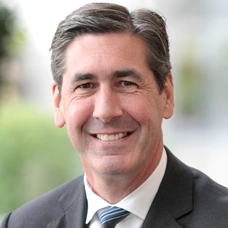Committing to Whole Health
Focusing on whole health is key to driving healthcare value, affordability, and outcomes.
Piece by piece, the healthcare system is starting to prioritize a more holistic view of health. The Centers for Medicare & Medicaid Services is making a new health equity index part of the Medicare Advantage Star Ratings formula starting in 2027.1 Additionally, the National Committee for Quality Assurance (NCQA) continues to add new Healthcare Effectiveness Data and Information Set (HEDIS) measures around patients' social needs.2
We believe that all people deserve the opportunity to live an optimal life, so we're doing our part at Elevance Health — working to help create a healthcare system that supports the whole health of those we serve to improve access, equity, quality, and affordability. We work across the Commercial, Medicaid, and Medicare spaces to be a lifetime trusted health partner, with national scale and local focus. It's what differentiates us — that, and our care provider partnerships.
By working together with our partners, we're equipped to better understand and meet our consumers' clinical and social needs to recognize and address care inequities.
of what drives health happens outside the doctor's office3
That means we must reach patients outside of the doctor's office to address all the factors that influence health — physical, behavioral, and social.

Measuring Whole Health Matters
To better drive improvements for the consumers we serve, we need to understand their whole health. That means creating and tracking actionable measures to inform interventions and outreach.
We developed our Whole Health Index for that purpose. The health measurement tool has been validated by an external research partner and highlighted in NEJM Catalyst.4 The index consists of 93 measures representing physical, behavioral, and social factors that together produce a single score (1 to 100) quantifying each consumer's whole health.
Using the Whole Health Index, we can drive real improvements for patients and populations: For example, we identified populations with low Whole Health Index scores (bottom 25th percentile) and designed tailored interventions to increase flu vaccinations among people with the highest risk for becoming seriously ill from the flu. Interventions included targeted marketing, transportation assistance, and local vaccination pop-up clinics.5 As a result, people who received these interventions were vaccinated at a rate up to 18% higher than others with higher Whole Health Index scores.5
Understanding Health Better
Learn how our Whole Health Index helps us make whole health actionable for everyone.
Advancing Health Equity
Our work to improve whole health is anchored in advancing health equity — which means everyone has a fair and equal opportunity to be as healthy as possible. We are proactively designing our operations for the best possible outcome, working to embed and reflect health equity in all we do across our lines of business.
Our strategy, termed "health equity by design," is a personalized and intentional approach to ensure that all people — regardless of race or ethnicity, sexual orientation, gender identity, disability, and geographic or financial access — can receive the individualized care they need. It's about optimizing health at the individual level for all.
Our care provider partners are invested in advancing health equity, too. To support our shared mission, we offer a variety of free resources and continuing medical education (CME) training to help us advance health equity together. In fact, nearly 43,000 e-learners have accessed our hosted CME training sessions that support delivery of care for a diverse population.6
Thousands of care providers across the globe, not just those in our network, are advancing health equity with the help of our training resources:6
~400
obstetric care provider partners trained on maternal bias as of the end of 2023
~30,000
e-learners completed the CME course "My Inclusive Practice: Improving Care for LGBTQIA+ Patients"
~43,000
people visited our care provider training site mydiversepatients.com
1 Centers for Medicare & Medicaid Services: Medicare Program; Contract Year 2024 Policy and Technical Changes to the Medicare Advantage Program, Medicare Prescription Drug Benefit Program, Medicare Cost Plan Program, and Programs of All-Inclusive Care for the Elderly (April 12, 2023): federalregister.gov. 2 National Committee for Quality Assurance: HEDIS MY 2024: What's New, What's Changed, What's Retired (August 1, 2023): NCQA.org. 3 U.S. Department of Health and Human Services: Community Health and Economic Prosperity: The Problem, the Causes, the Opportunities, and the Solutions—At a Glance (January 2021): https://hhs.gov/sites/default/files/chep-sgr-at-a-glance.pdf. 4 Winnie C. Chi, PhD, MS, J. Marc Overhage, MD, PhD, Todd Sponholtz, PhD, MPH, Binh T. Nguyen, PhD, Peter Brady, MBA, April Falconi, PhD, MPH, MA, Martha Johnson, PhD, et al.: The Whole Health Index: A Practical, Valid, and Reliable Tool to Measure Whole-Person Health and Manage Population Health. New England Journal of Medicine Catalyst (May 2023): https://catalyst.nejm.org/doi/full/10.1056/CAT.23.0015. 5 Elevance Health, internal data, flu season 2022 (July 2022 to June 2023). 6 Google analytics data (December 2023).